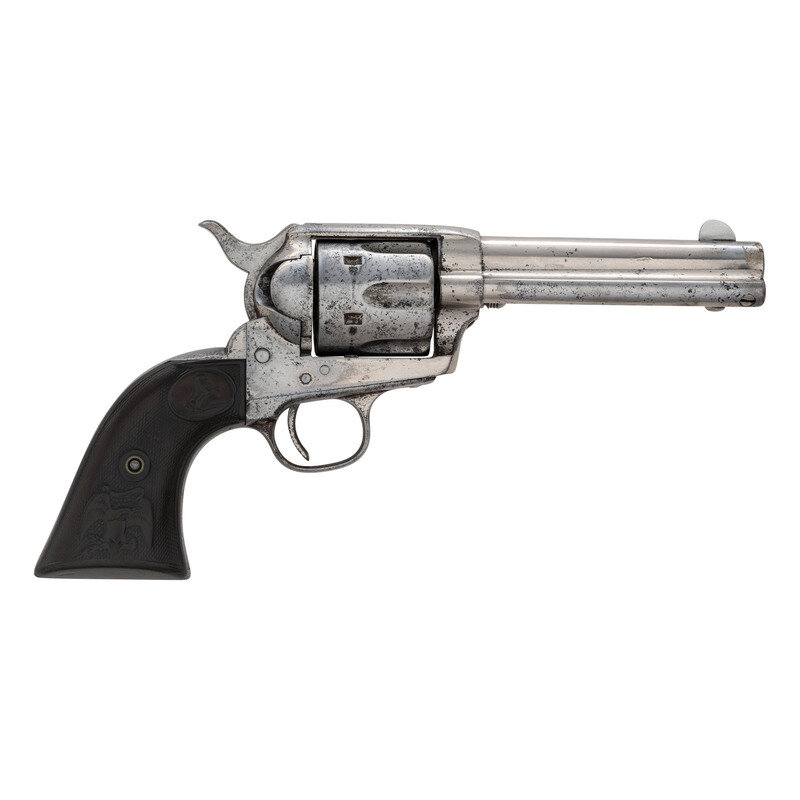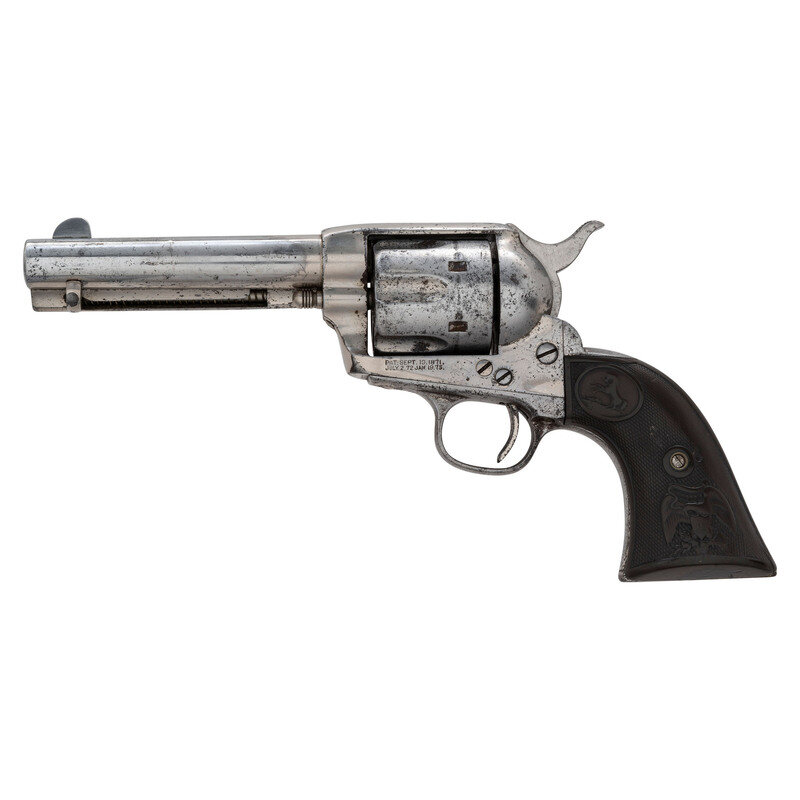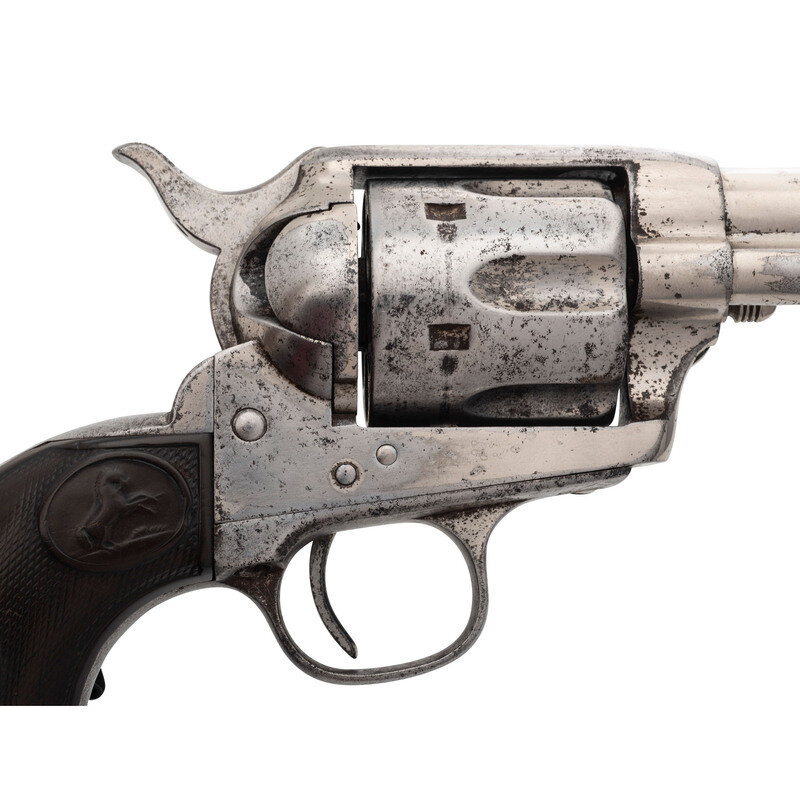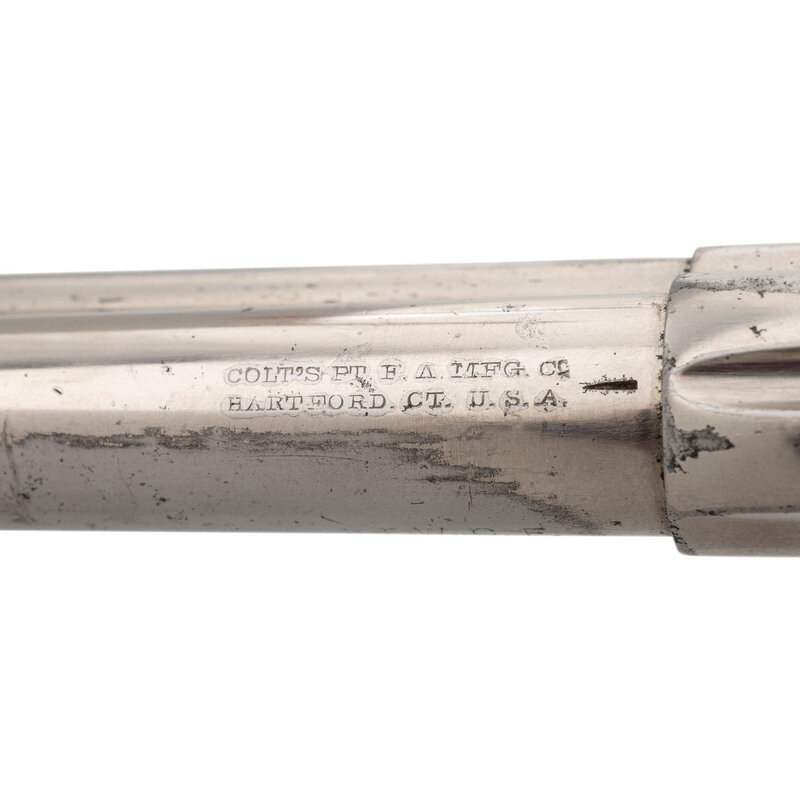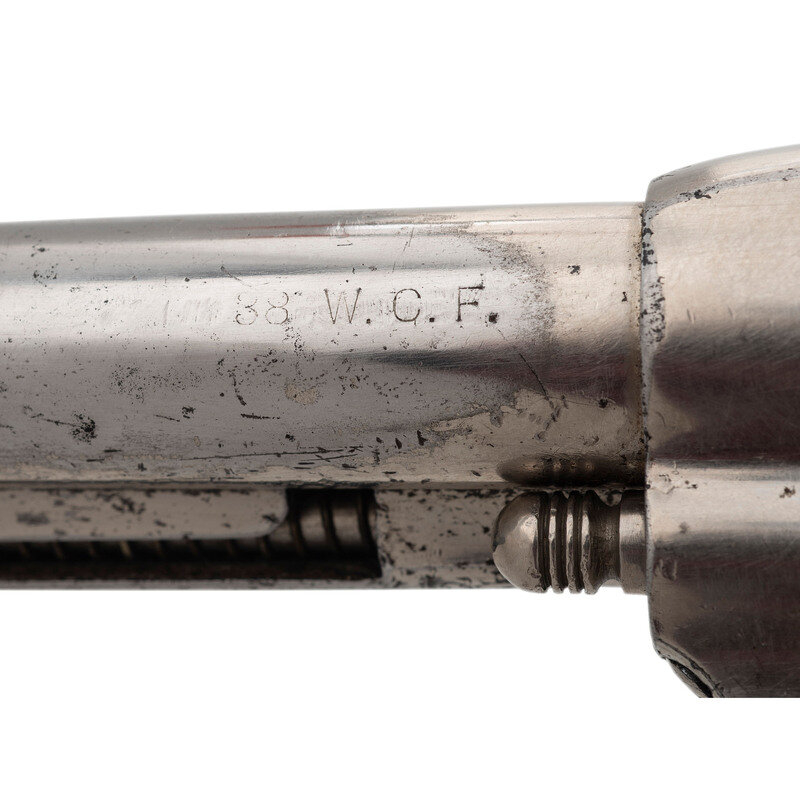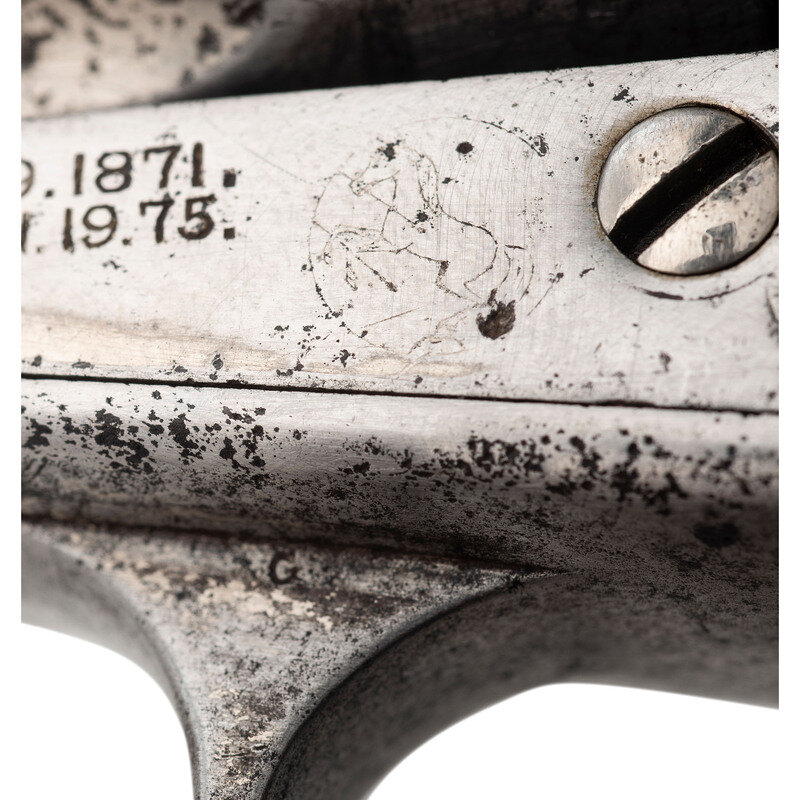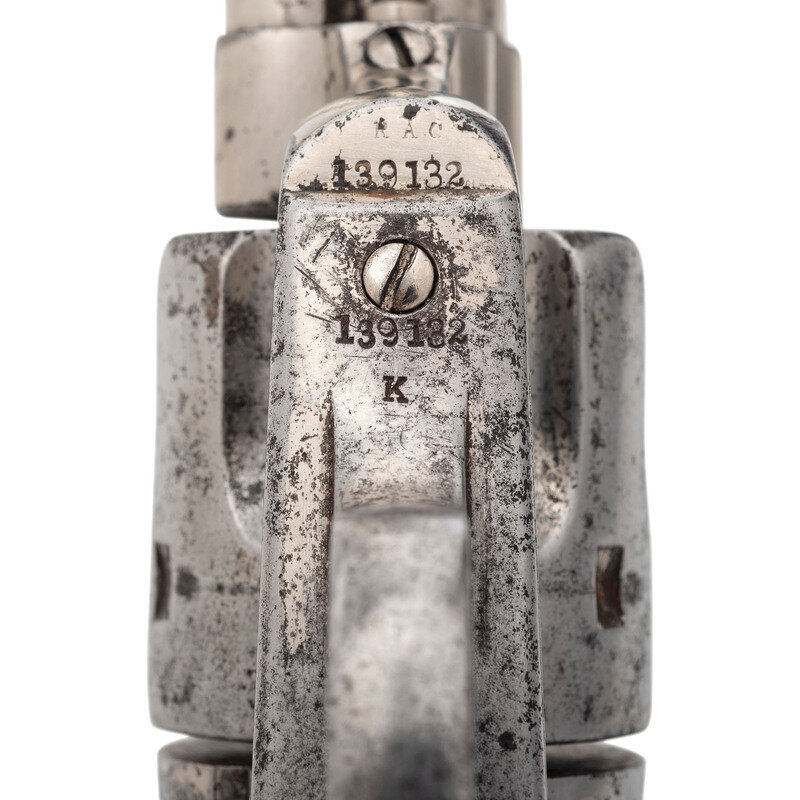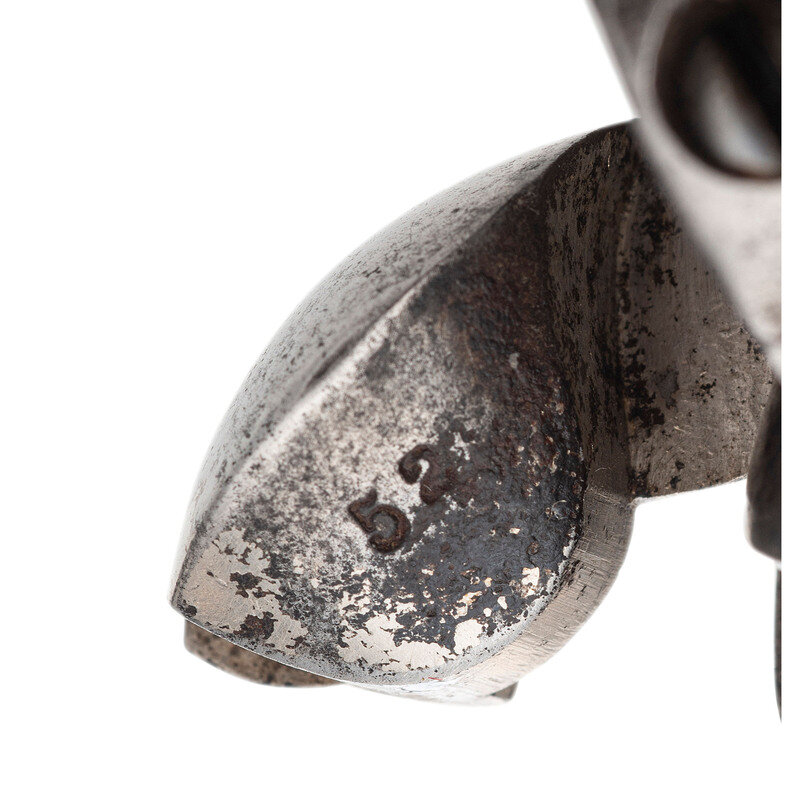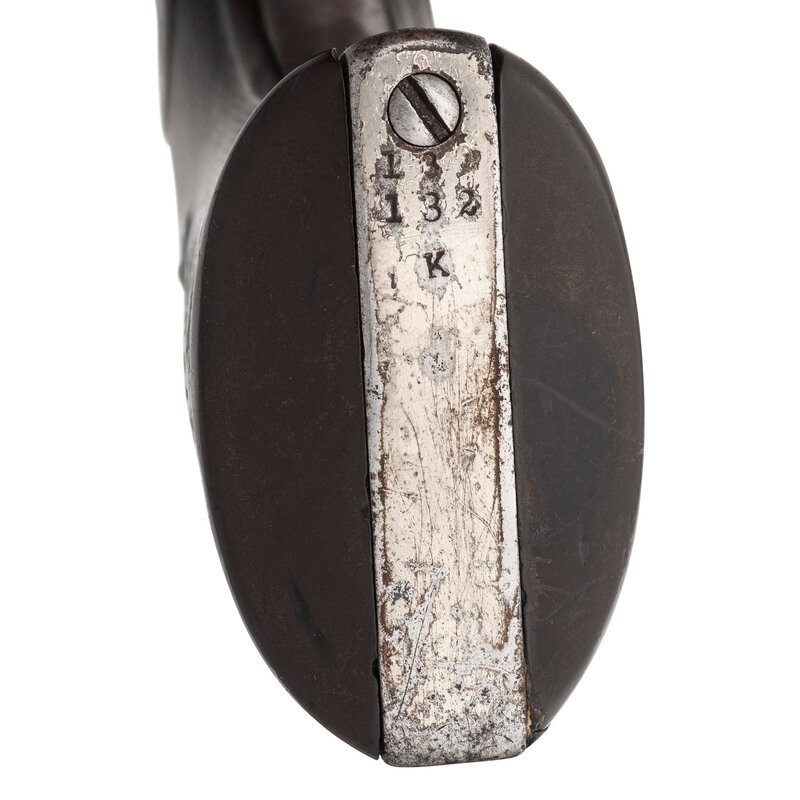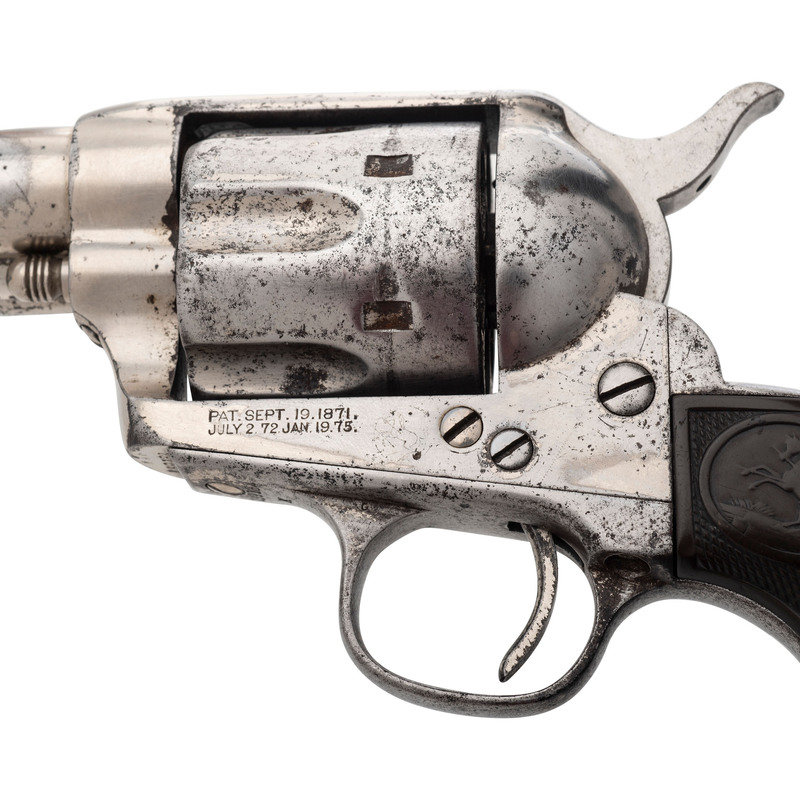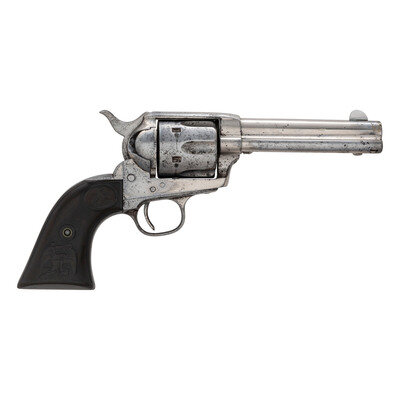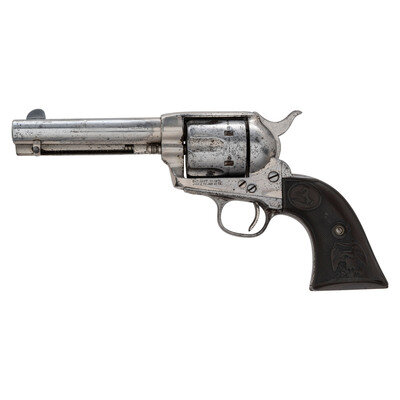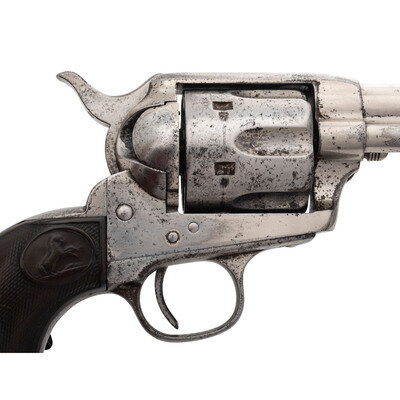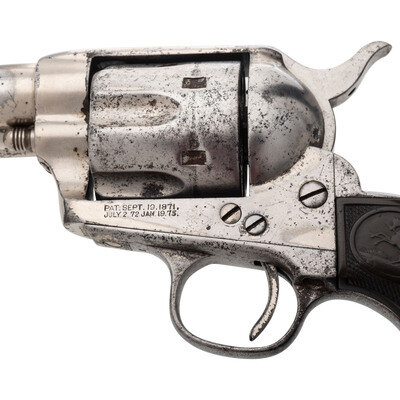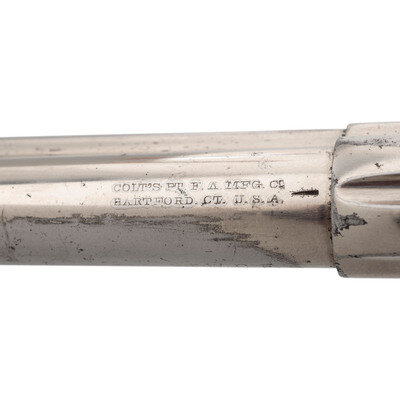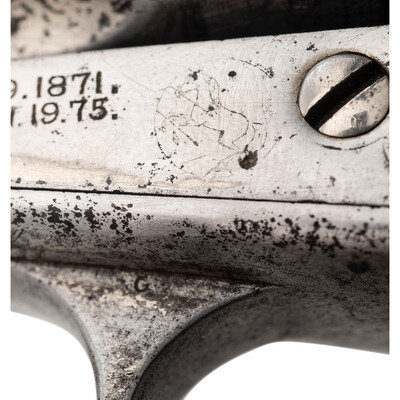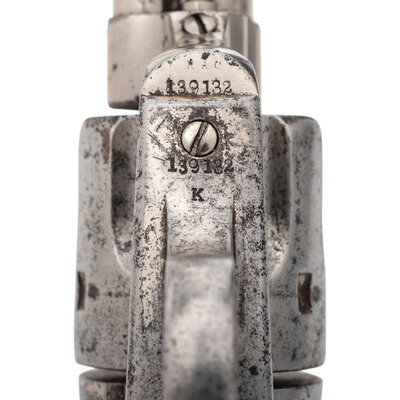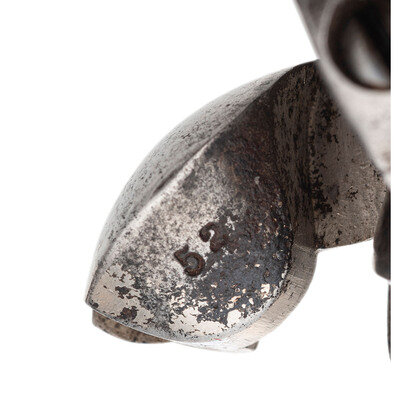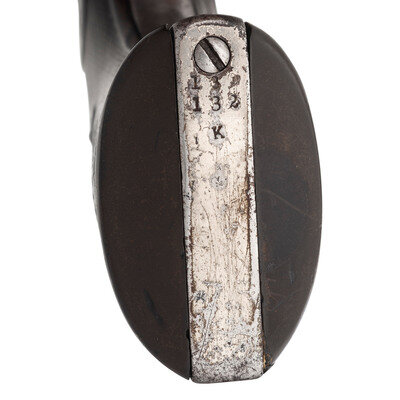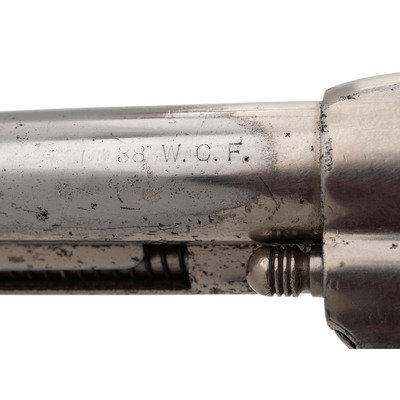.38-40 caliber. 4.75" barrel. SN: 139132 (mfg. ca1891). Nickel finish, checkered hard rubber Eagle motif grips. Single action metallic cartridge revolver with blackpowder frame and six-chambered fluted cylinder. Barrel marked in two lines: COLT'S PT. F.A. MFG. CO/HARTFORD, CT. U.S.A. Left of frame with three-date in two-line patent marking which reads PAT. SEPT. 19, 1871./JULY 2. 72. JAN. 19. 75. and is followed by a weak {Rampant Colt} in a circle logo. An extremely weak, almost completely illegible US is found on the lower left of the frame, with only the "U" partially visible, and the "S" over stamped by the Colt logo . The left side of the barrel is weakly roll marked .38 W.C.F. The frame is sub-inspected with the small R.A.C. of US Ordnance Department sub-inspector Rinaldo A. Carr, who was inspecting US military contract Colt Single Action Army revolvers during this period. A Colt factory inspection K is found below the serial numbers on the triggerguard and butt. These "K" marked parts are typically believed to be spare parts produced for the military circa 1890-1891. Matching serial numbers are present on the frame, triggerguard and butt, with the barrel and cylinder unnumbered. The loading gate is assembly numbered 52. The grips are not scratch numbered or marked in any way on their interiors. The revolver is equipped with the standard Colt fixed front sight blade and notched frame rear sight, a blackpowder frame with angled arbor pin retention screw and a kidney shaped ejector rod head. Hammer spur checkering is of the military hammer style. These partially martially marked Colt "military" single actions built as civilian guns have long presented a conundrum for the collector. While some of the earlier civilian revolvers made with military inspected parts are found with the expected US government inspected condemnation "C" mark near the sub-inspections, these later guns circa 1890-1891 often do not. Two theories exist, one that Rindaldo Carr entered into a "gentleman's agreement" with Colt where he did not apply the condemnation "C" to parts that did not pass the final inspection, which made them easier to sell on the commercial market, or that the parts were simply overrun parts that were not needed to fulfill contracts with the government. In any case, these partially R.A.C. inspected guns appear as civilian revolvers in a variety of barrel lengths and caliber. Kopec in particular notes a number of the guns chambered in .44-40 and of course .45 Colt. Kopec notes this gun specifically by serial number in his work A Study of the Colt Single Action Army on page 239. Here he discusses the rarity of the "Rampant Colt" logo on the frame of US military inspected guns. He notes that this is the earliest US military inspected frame he has noted with the "Rampant Colt" marking. The gun is further discussed and pictured in Colt Single Action Army Revolver Study - New Discoveries by C. Kenneth Moore on pages 13-15. Here the original Kopec discussion is revisited and it is noted that based upon factory records, the gun was shipped in its current configuration as a civilian gun. Thus, it is not technically a "martial revolver" with a "Rampant Colt" logo. Moore notes that no authenticated example of a "Rampant Colt" marked martial single action is known to exist. This cataloger has handled one other "RAC" and "Rampant Colt" marked Single Action Revolver that was also made in 1891 and it too was a civilian gun with "K" marked triggerguard and butt. The included factory letter notes that this gun shipped to Hartley & Graham in New York on 1 August 1891 with a nickel finish, 4.75" barrel and chambered in .38-40, with the type of grips on the gun "unlisted". Overall a very interesting "overrun" military Colt Single Action Army Revolver, made for the civilian market with a rarely encountered Rampant Colt mark on a martially marked frame, that is mentioned directly by serial number and published in the finest reference sources on these guns available.
